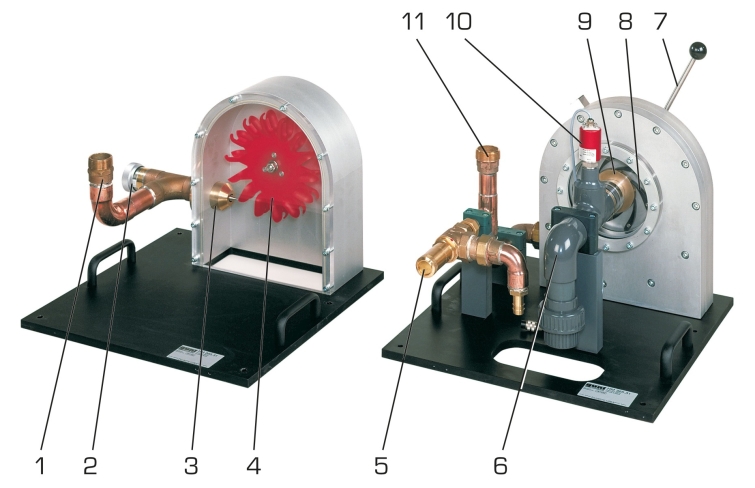Water turbines are turbomachines utilising water power. They convert pressure and flow energy into mechanical energy and mostly are used for driving electrical generators. Water turbines can be divided into impulse and reaction turbines depending on their operating principle.
The HM 365.31 accessories contain a Pelton turbine as an example for an impulse turbine and a Francis turbine as an example for a reaction turbine. The two turbine types are examined and compared with each other together with the supply unit HM 365.32 and the brake unit HM 365. The brake unit offers the possibility to set constant speeds resp. torques. Thus you can realise experiments in different realistic operating modes.
The Pelton turbine is a free-jet turbine which converts the pressure energy of the water into kinetic energy entirely in the distributor. As the complete pressure difference is reduced exclusively in the nozzle, the pressure is constant in the Pelton wheel. The turbine is also known as a constant pressure turbine. The turbine output is adjusted by adjusting the nozzle cross-section.
The Francis turbine converts the pressure energy of the water into kinetic energy in the distributor and in the rotor. The pressure at the rotor inlet is higher than at the rotor outlet. The turbine output is adjusted by adjusting the guide vanes.
HM 365.32 provides the water supply, the pressure measurement at the turbine inlet and the flow rate measurement. In order to measure the pressure at the turbine outlet, the Francis turbine is equipped with an additional pressure sensor. The brake unit HM 365 measures the braking torque and the speed.
















